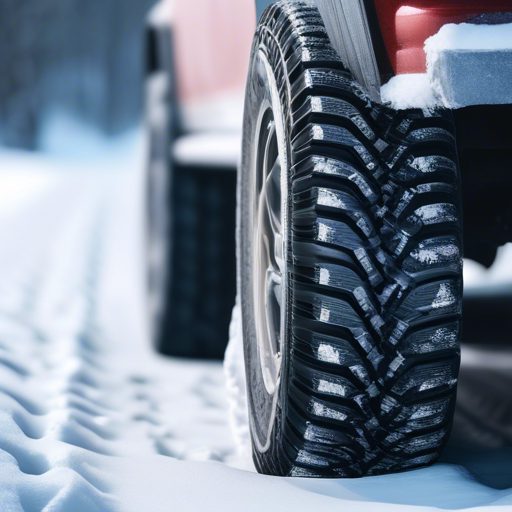Picture this: you’re cruising down the highway on a winter’s day, the snow is falling gently, and your car seems to be devouring fuel like a hungry beast. You might wonder if your winter tires are to blame for the voracious appetite of your vehicle. Indeed, while these specialized tires offer you the grip needed […]
Picture this: you’re cruising down the highway on a winter’s day, the snow is falling gently, and your car seems to be devouring fuel like a hungry beast. You might wonder if your winter tires are to blame for the voracious appetite of your vehicle. Indeed, while these specialized tires offer you the grip needed to tackle slippery roads, they’re also notorious for potentially lowering your gas mileage. But how significant is this impact, and is it a price worth paying for the added safety? As you navigate the icy streets, you’ll want to consider the trade-offs between fuel efficiency and the security that winter tires provide. Stay tuned to uncover the hidden costs of those extra treads and learn how to strike the right balance for your winter driving needs.
Winter tires’ enhanced grip comes at the cost of increased rolling resistance, which can lead to a noticeable dip in your vehicle’s fuel efficiency. The tread rubber on winter tires is designed to stay soft and flexible in cold temperatures, allowing them to grip the road more effectively. This softer rubber, coupled with deeper tread patterns, increases friction. While this is great for reducing slippage and improving traction, it also means your tires have to work harder to roll, effectively reducing fuel economy.
The larger rubber lugs on winter tires contribute to this increased resistance. As they deform more than your regular tires, more energy is expended, which can diminish better gas mileage that you’re used to during warmer months. It’s a trade-off: you get improved safety and performance in winter conditions, but it comes at the expense of fuel efficiency.
While you’ve seen how the softer rubber of winter tires affects your fuel economy, it’s the tread patterns that play an equally crucial role in how efficiently your car uses gas. The design and depth of these patterns are optimized for winter driving, but they can also influence gas mileage in cold weather.

Here’s how the tread patterns impact on efficiency:
Monitoring tire pressure and choosing tires with a good balance between traction and fuel efficiency can help mitigate the impact of tread patterns on your car’s gas mileage.
You might not realize it, but the drop in temperature during winter months can significantly affect your vehicle’s fuel economy. When it’s cold outside, your car needs more energy to get going, which means worse gas mileage. This is due to a combination of factors, including the need for your engine to work harder to overcome the thickening of fluids and the increased rolling resistance of your tires.
The cold weather also means you’re likely to leave your car idling longer to warm it up, which uses gas without actually getting you anywhere. Additionally, winter fuel blends often contain ethanol, which can further reduce fuel efficiency because ethanol contains less energy compared to pure gasoline.
While winter tires are essential for safety, providing better traction on snowy roads and reducing slippage, they come with a trade-off. These tires typically have higher rolling resistance than summer or all-season tires, leading to lower gas mileage. Some manufacturers have developed eco-tires, a type of winter tire designed with lower rolling resistance to help mitigate the negative impact on fuel economy. Choosing the right tire can be a balancing act between safety and efficiency during the cold months.
When comparing seasonal tire performance, it’s crucial to recognize that snow tires, despite increasing traction, often lead to a dip in your vehicle’s mpg due to their design characteristics. These tires are better suited for safe driving in slushy conditions and on slick snow, but they aren’t as efficient on dry roads. The deeper treads on snow tires are designed to provide more grip, but they also require more energy to flex, thus increasing rolling resistance.
Here are some key points to consider:
Understanding these differences will help you make informed decisions about tire choices and driving habits across the seasons.
Understanding the impact of winter tires on fuel efficiency leads to exploring strategies for maximizing your vehicle’s mileage during the colder months. While snow tires might increase rolling resistance due to their deeper tread, resulting in more energy needed to move your car, they also enhance traction. This means you’re less likely to spin your wheels or get stuck, which would otherwise be wasting energy.
To make the most of your winter tires and prevent unnecessary fuel consumption, make sure they’re properly inflated. Tires that are underinflated have higher rolling resistance, which can exacerbate the energy needed to deform the tread. Additionally, since winter tires are specifically designed for cold weather, don’t use them outside the winter months; the softer rubber compound can wear down faster on warmer pavement, leading to reduced efficiency.
Maximizing mileage with winter tires also involves driving habits. Be gentle with the accelerator, especially when roads are slick, to avoid wheel spin. Plan your routes to avoid hilly terrain where possible, since climbing requires more power and thus more fuel. By adapting your maintenance and driving style, you’ll ensure that winter tires contribute to your safety without significantly compromising gas mileage.
In a nutshell, winter tires can nibble at your fuel economy like a hungry rabbit on a carrot. The increased rolling resistance and aggressive tread patterns mean your car works harder, sipping more gas. Despite this, they’re essential for safety in Jack Frost’s playground. If you’re keen on keeping the mileage up, stay diligent about tire pressure and swap back to regular tires when the snow melts. Your gas mileage—and wallet—will thank you.
